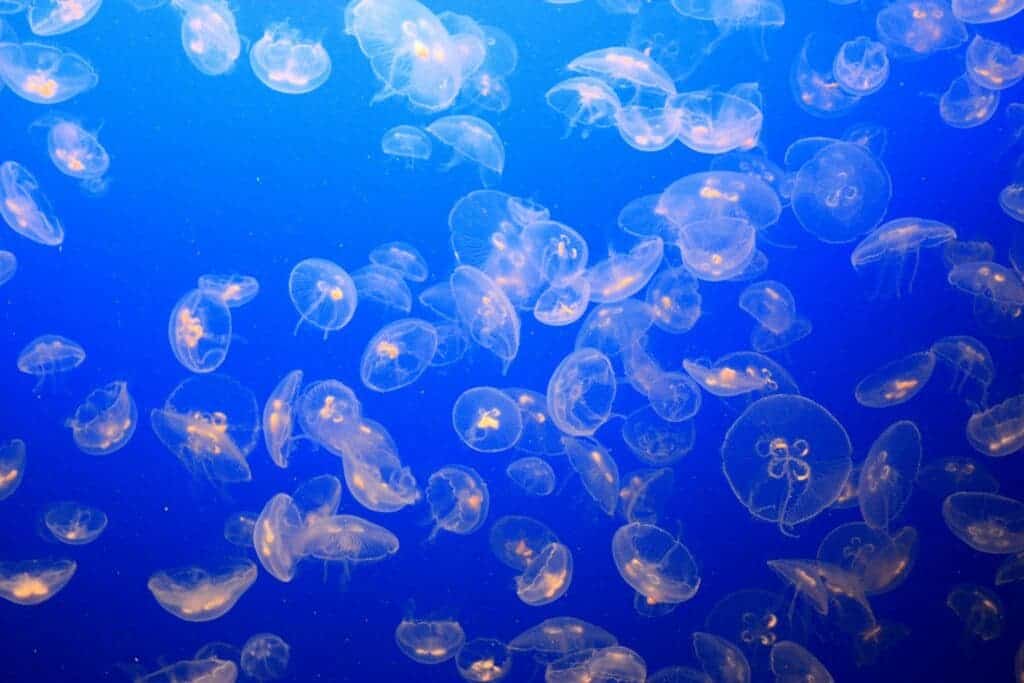Jellyfish aren’t exactly picky eaters — it’s hard to be picky when you’re not really in control of where you’re going and what you’re doing. They munch on most things they come across, and this “whatever” approach to eating has shrouded our understanding of their eating habits. Now, researchers from the Institute for the Oceans and Fisheries (IOF) in Canada used biochemical tools, stable isotopes, and fatty acids, to unravel the mystery of jellyfish feeding.

Jellyfish evolved more than 500 million years ago and they’re still around, so they must be doing something right — which seems weird at first glance. After all, they just drift along with the oceans, swaying at the mercy of currents. But if there’s one thing that jellyfish do right, it’s eating.
Most of them are carnivorous or parasitic, feeding on plankton, crustaceans, small fish, fish eggs and larvae, and other jellyfish, ingesting food and eliminating undigested waste through the mouth. They don’t spend much energy hunting, either — they passively hunt, leaving their tentacles as drifting lines that stun or kill the prey.
But these habits are hard to track, and researchers aren’t sure exactly where jellyfish fit in the oceanic food chain.
“Jellyfish have long been ignored in research, often considered more of a nuisance than an organism of interest,” said Dr. Brian Hunt, IOF professor and study co-author. “However, there is a growing awareness that they can play a key role as both predators and prey.”
To get to the bottom of this, researchers tracked biomarkers: natural isotopes of elements like carbon and nitrogen (which exist in certain ratios in tissues), and fatty acids, which are produced in unique compositions by plants at the base of the food web. As these biomarkers get passed on along the food chain, they develop specific signatures.
Based on these signatures, researchers can figure out an animal’s position on the food chain, but they first need some calibration values — this study developed the first such calibration values for jellyfish.
“Until now, jellyfish ecologists were using a generalized calibration value for these biomarkers because they didn’t have jellyfish-specific ones,” said Jessica Schaub, the study’s lead author and recent M.Sc. graduate at the IOF. “This study tested how much the concentrations of isotopes and fatty acids changed, and how quickly they were absorbed when jellyfish digested their prey and incorporated prey signatures into their bodies.”
“The numbers we found were different enough that it’s worth going back to previous jellyfish studies that applied the general values—they will likely get different results if they applied our values,” Schaub said.
The results were quite surprising. The study found that jellyfish seem able to “elongate” fatty acids — in other words, they create their own omega-3 and omega-6 fatty acids. These acids are important for many organisms, but most creatures are unable to produce them, so instead, they get them from their diet. This phenomenon has only been observed in a few other organisms, and it’s the first time it’s ever been observed in jellyfish.
Jellyfish also don’t seem to be as indifferent to what they eat as we thought.
“It seems straightforward, but it’s never that easy—you get the data and you’re like, ‘what’s happening here?'” Schaub said. “We were surprised about the moon jellyfish. We fed them two crustaceans, krill and artemia, but they didn’t really incorporate the krill. We think of jellyfish as not being picky eaters, but in this case, it seemed that they didn’t like feeding on a single diet. Either it didn’t meet their nutritional needs, or they preferred the live artemia over the dead, frozen krill. The aquarium has been feeding them these krill for a long time, so it’s good to be able to tell the aquarium that it’s maybe not worth investing in the krill any longer.”
All in all, it seems like we’re just starting to unravel the secret lives of jellyfish — and there may be more lurking beneath the surface.
Journal Reference: Jessica Schaub et al, Experimentally derived estimates of turnover and modification for stable isotopes and fatty acids in scyphozoan jellyfish, Journal of Experimental Marine Biology and Ecology (2021). DOI: 10.1016/j.jembe.2021.151631


